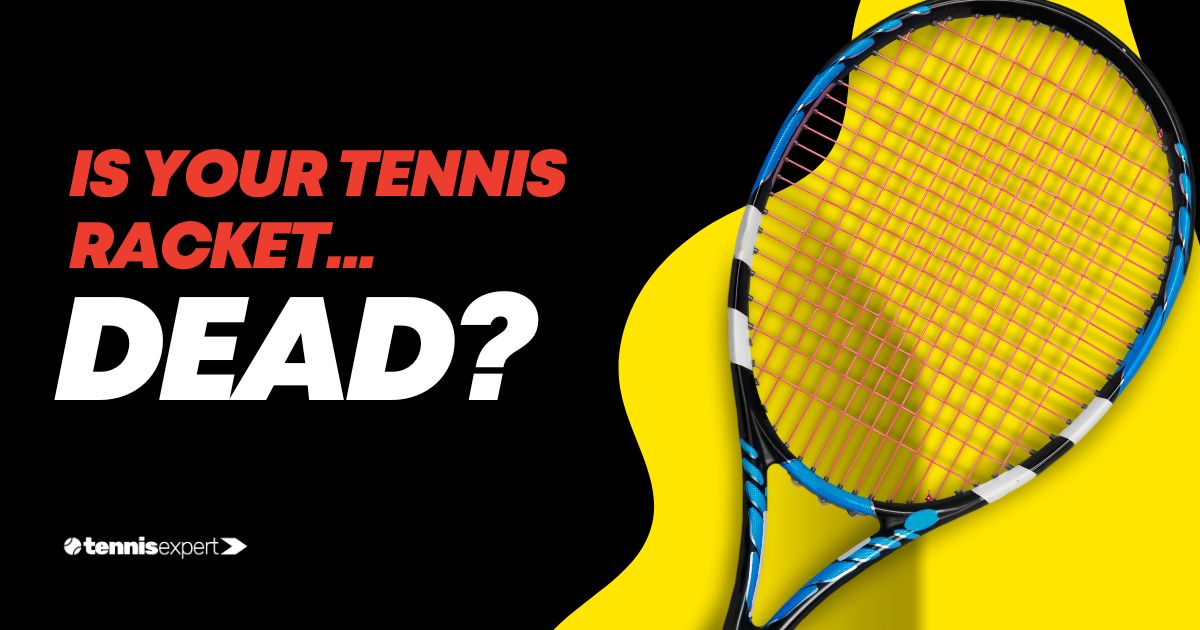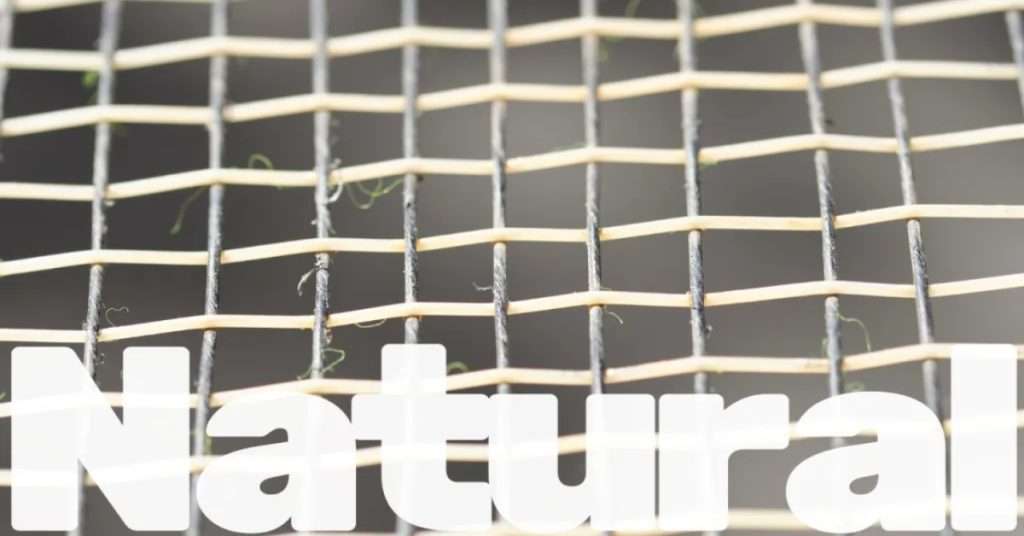Have you ever wondered how long your beloved tennis racket will last? Well, it all comes down to the materials that make up its frame. Typically, rackets are constructed using a combination of fiber and resin, which are put under immense stress during gameplay. This is especially true for physically strong players who hit big serves and aggressive groundstrokes.
Over time, the constant wear and tear will cause the fiber and resin to break down, leading to a reduction in the racket’s stiffness. While this process happens gradually, players might not notice the change until it starts to impact their game. As the stiffness decreases, so does the power and spin that the racket can produce, ultimately affecting control and performance.
To detect any deterioration in your racket’s frame, you could take it to an expensive machine known as a ‘Racket Diagnostic Center’ (RDC), which measures frame stiffness. However, if you don’t have access to this equipment, you can still determine how long your racket will last based on general guidelines.
If you’re a big hitter who hits regularly and plays tournaments, your racket will likely last about a year before losing stiffness. However, if you’re a club player who doesn’t hit the ball particularly hard and takes good care of your equipment, your racket could last up to 10 years or even longer without any issues.
- Factors That Impact the Life Expectancy of Your Racket
- Why You Should Consider Changing Your Racket Even If It's Still in Good Condition?
- Effective Ways to Extend the Lifespan of Your Racket
- Exploring the Impact of Lower-Quality Rackets
- One or Two Rackets?
- Proven Strategies to Increase Your Racket's Lifespan
- How to Decide and When to Upgrade
Factors That Impact the Life Expectancy of Your Racket
There are several factors that can affect why tennis rackets wear out, some of which are obvious, while others might not be. Firstly, how often you play and how hard you hit the ball will definitely impact your racket’s longevity. The more frequently you play and the harder you hit, the more stress your racket’s frame will endure. This is especially true for big hitters who play with aggressive strokes. Another variable that may not be so obvious is how you store your racket. Extreme temperatures, whether hot or cold, can cause damage to the frame, so make sure you store it in a cool, dry place.
The stringing process is also critical for your racket’s lifespan. The string is under high tension and must be removed carefully, and the clamps holding the racket during stringing must not be too tight. If the stringer is careless or the clamps are worn out, this could result in damage. Frequent restringing can also shorten your racket’s lifespan, as every time the racket is restrung, there is a risk of damage.
Of course, your racket can also be damaged during play, whether through scraping on a hard court or because of an angry outburst. Professional players can sometimes get away with throwing their rackets around, but this is an expensive habit for amateurs. Once a frame cracks, the racket is useless and must be replaced.
Why You Should Consider Changing Your Racket Even If It’s Still in Good Condition?
Even if your current racket is in great shape, the extra weight could make a big difference in your tennis game. For more serious players, it’s important to stay on top of your racket’s condition. Over time, the frame can lose stiffness, even if it still looks fine on the surface. That’s why it’s a good idea to replace your racket regularly, so you can be sure you’re playing with equipment that will give you the best possible performance.
On the other hand, if you’re a casual club player, you may not need to switch rackets as often. As long as your current racket feels comfortable and suits your play style, there’s no need to spend money on a new racquet every season. With proper care and maintenance, your racket should last for several years without any issues.
Effective Ways to Extend the Lifespan of Your Racket
By following some simple steps, you can prolong the lifespan of your racket and keep it in top condition. One crucial step is to avoid hitting hard surfaces with your racket. Doing so can increase the likelihood of the racket breaking, which can be costly and inconvenient. Instead, be mindful of where you play and try to avoid hitting your racket on hard courts.
It’s also important to keep your racket away from extreme temperatures, whether hot or cold. Exposure to such conditions can damage the racket’s materials and affect its performance, so be sure to store your racket in a suitable environment. It’s essential to replace your racket when you begin to feel a decrease in power and control. Over time, rackets can wear down and become less effective, so be sure to invest in a new one when necessary.
Similarly, replace your strings regularly, especially if you play on a regular basis. Over time, strings can become soft and loose, which can affect your game. As a general rule, it’s a good idea to your frame restrung at least once every three months.
Exploring the Impact of Lower-Quality Rackets
The cost difference between a performance racquet and a cheaper model is not that significant when considering the durability and lifespan of the racquet. Low-tier tennis racquets often lack the ability to be re-strung, which means that once the strings break, the racquet is rendered useless. In contrast, a performance racquet can last up to two years, making it a more cost-effective choice in the long run.
Cheaper racquets also lack the necessary durability to withstand the rigors of regular use. They may be suitable for extremely casual hitting, but they are not designed to hold their shape after being strained multiple times. A performance racquet, on the other hand, is constructed with higher-quality materials that can withstand the demands of regular use and maintain its shape and performance.
Furthermore, performance racquets offer several features that can significantly improve a player’s game. They provide better control, power, and stability, allowing players to hit the ball with more accuracy and force. This can be especially important for beginners who are still developing their technique and need a racquet that can support their progress.
One or Two Rackets?
While it may not be an absolute requirement to own a second tennis racket, it can undoubtedly prove advantageous if you aim to prolong the longevity of your current racquet. Utilizing a backup racket can help minimize the wear and tear that your primary racket undergoes, thereby enhancing its lifespan. Many club players and pros opt to use 2-3 different rackets in a year, depending on the playing surface.
Having a backup racket is a wise decision if you are participating in a tournament and do not want to risk damaging your only racket. However, it is essential to ensure that both rackets are of the same type so that switching between them does not significantly impact your gameplay during matches.
If you are uncertain about whether owning a backup racket is suitable for you, it is advisable to seek guidance from a local tennis pro. They can evaluate your playing style and recommend the most appropriate course of action to preserve the good condition of your racket.
Proven Strategies to Increase Your Racket’s Lifespan
Maximizing the lifespan of your racket is crucial to ensure optimal performance on the court. Taking proactive steps to prevent unnecessary wear and tear can save you from the inconvenience and cost of frequently replacing your equipment. To help you achieve this goal, here are some essential tips to keep your racket in top condition for longer.
Top Indicators that It’s Time to Upgrade Your Racquet
If you begin to feel like your racket has become heavier or less responsive, it may be a sign that it’s time for an upgrade. When you hit the ball, you might notice a lack of control or power due to the loosening of the strings. Another key indicator that it’s time for a new frame is if you notice a significant dent or damage to the racquet frame. These imperfections can have a negative impact on your accuracy, making it challenging to hit the ball with precision.
If you notice any of these warning signs, don’t hesitate to replace your racket. Delaying the replacement could hurt your game and hinder your progress on the court. So, stay vigilant and keep an eye out for any signs of wear and tear on your tennis racket. A fresh racket will make a world of difference in your game and elevate your performance to new heights.
Restringing
The strings in your racket are arguably the most critical component and require proper care and attention. Over time, tennis strings lose tension (i.e. approximately 10% of string tension is lost as soon as a racket gets off the stringing machine in the first 24 hours after stringing depending on the string type), affecting your ability to control shots and perform at your best. This is when you know it’s time to get your racket restrung. So, how often should you get it done? A general rule of thumb for tennis players is to get a new string twice a year if you play twice a week, thrice if you play three times a week, and so on.
It’s important to note that restringing your racket too frequently can result in slight distortions in the frame, leading to a softer racket. Thus, while restringing is crucial for peak performance, it’s essential to strike a balance between proper care and overuse.
Replacing Bumper Guards and Grommets
The protector of the racket frame head is called the bumper guard, which is composed of long-lasting plastic material. Its primary purpose is to shield the head of the racket from any possible harm or damage that might occur during play. In case your racket does not come equipped with a bumper guard, it is advisable to install one to add an extra layer of security and protection to the frame.
Often, players are not mindful of the fact that when they swing at balls that are too low to the ground, their racket might scrape or even hit the ground, causing damage to the frame. In such cases, the bumper guard acts as a lifesaver for the racket. It is crucial to keep a close eye on the bumper guard and replace it as soon as any signs of wear and tear become evident, in order to ensure that the head of the frame remains well-protected.
Changing the bumper guard is a relatively easy task. In addition to bumper guards, grommets are also plastic pieces that are used to safeguard the racket. Grommets are plastic inserts found at the mouth of each string hole, and they prevent the string from rubbing against the frame. By doing so, they protect the string from wearing down quickly and becoming damaged. Therefore, it is essential to inspect the bumper guards and grommets periodically, and if any of them appear worn out or damaged, it is highly recommended to replace them.
How to Decide and When to Upgrade
After two years, it is recommended to carefully inspect each racquet. For players who are not able to engage in as much play as they would like, there may be a chance to prolong the lifespan of their racquet for a third year. On the other hand, those who play regularly should contemplate acquiring a replacement. This does not imply that the old racquet should be discarded but should be relegated to a backup role.
Tennis manufacturers continuously come up with new technologies, and obtaining a new racket is an excellent approach to staying current with these developments. Although purchasing a new tennis racquet may be frustrating, the bright side is that this undertaking only needs to be done every two years in most scenarios.
Christoph Friedrich is a German tennis player and coach currently residing in Oakland, California. He began his tennis journey at the age of eight and has since dedicated his life to the sport. After working as a tennis coach and hitting partner in New York City for eight years, Christoph decided to share his knowledge and experience with tennis players around the world by creating the My Tennis Expert blog. His goal is to make tennis education accessible to everyone and help players select the best equipment for their game, from racquets and strings to shoes and overgrips. Christoph's extensive research and expertise in tennis technology make him a valuable resource for players of all levels.



